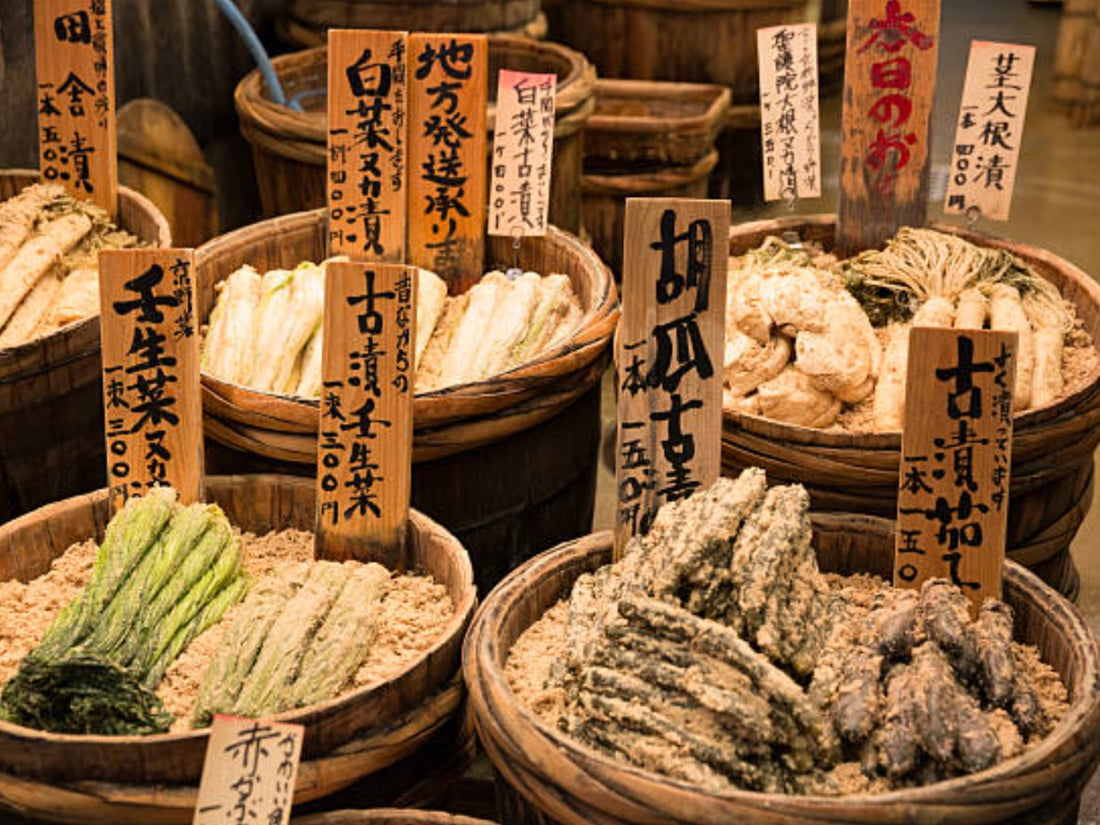Tsukemono is a traditional Japanese dish that consists of pickled vegetables, commonly served as a side dish or condiment in Japanese cuisine. Tsukemono plays an important role in Japanese cuisine as it complements other dishes and adds a refreshing touch to the meal. Tsukemono provide a balance of flavors, adding a tangy and slightly salty taste that cleanses the palate and enhances the overall dining experience.
What is Tsukemono

The word "tsukemono" means "pickled things" in Japanese. It is a traditional Japanese dish made of pickled vegetables that are preserved in salt, vinegar, and other ingredients such as soy sauce, sugar, ginger, and chili pepper. Tsukemono can be made from many different types of vegetables, including cucumbers, daikon radish, cabbage, eggplant, and carrots, among others. Each vegetable has its own unique flavor and texture when pickled.
Tsukemono is an essential part of Japanese food culture and is enjoyed by people of all ages. Its unique flavors and health benefits make it a popular choice for those looking to explore the diverse world of Japanese cuisine. The pickling process used in making tsukemono produces lactic acid bacteria, which is beneficial for gut health and digestion. Tsukemono is considered to be a healthy food option due to its low-calorie count and high levels of vitamins and minerals.
The taste of tsukemono, or Japanese pickles, can vary depending on the type of pickle and the ingredients used in the pickling process. However, in general, tsukemono has a sour and salty flavor that is achieved through the pickling process. Tsukemono is often served as a side dish or condiment in Japanese cuisine, accompanying main dishes like rice, noodles, and grilled meats. It is also commonly enjoyed as a snack or appetizer.
History of Tsukemono

Tsukemono, or Japanese pickles, have a long history in Japanese cuisine dating back over 2,000 years. The origin of tsukemono can be traced back to China and Korea, where pickling was a common method of preserving food. The practice of pickling vegetables was introduced to Japan during the Yayoi period (300 BC-300 AD), where it became an important part of the country's food culture. Tsukemono were originally made by fermenting vegetables in salt and rice bran, which was a common method of preservation at the time.
Over time, new techniques and ingredients were introduced to create different types of pickles with unique flavors. During the Edo period (1603-1867), tsukemono became a staple food in Japanese households, and many different varieties were created using regional vegetables and local seasonings. Today, tsukemono is still a popular dish in Japan and is enjoyed as a side dish or condiment with traditional meals like rice, soup, and grilled meats. Many Japanese families continue to make their own tsukemono at home, using family recipes that have been passed down for generations.
Types of Tsukemono

Tsukemono is a diverse and delicious category of food in Japanese cuisine, offering a wide range of flavors and textures that complement a variety of dishes. Here are some of the most popular types of tsukemono:
Umeboshi: made from pickled plums, umeboshi is one of the oldest and most traditional types of tsukemono. It has a salty and sour taste and is often used as a topping for rice dishes.
Takuan: also known as yellow pickled radish, takuan is made by lightly pickling daikon radish in vinegar and salt. It has a sweet and slightly tangy flavor and is often served as a side dish.
Nukazuke: this type of pickle is made by burying vegetables in fermented rice bran, which creates a lactic acid fermentation process that results in a tangy and flavorful food.
Shibazuke: this pickle is made from cucumbers and eggplant that are pickled in red shiso leaves, giving it a vibrant pink color and a tart and slightly spicy flavor.
Gari: made from pickled ginger, gari is often served alongside sushi to cleanse the palate between bites. It has a sweet and slightly spicy flavor.
Asazuke: this type of pickle is made by soaking vegetables briefly in a light vinegar solution. It is often served as a refreshing side dish during the summer months.

